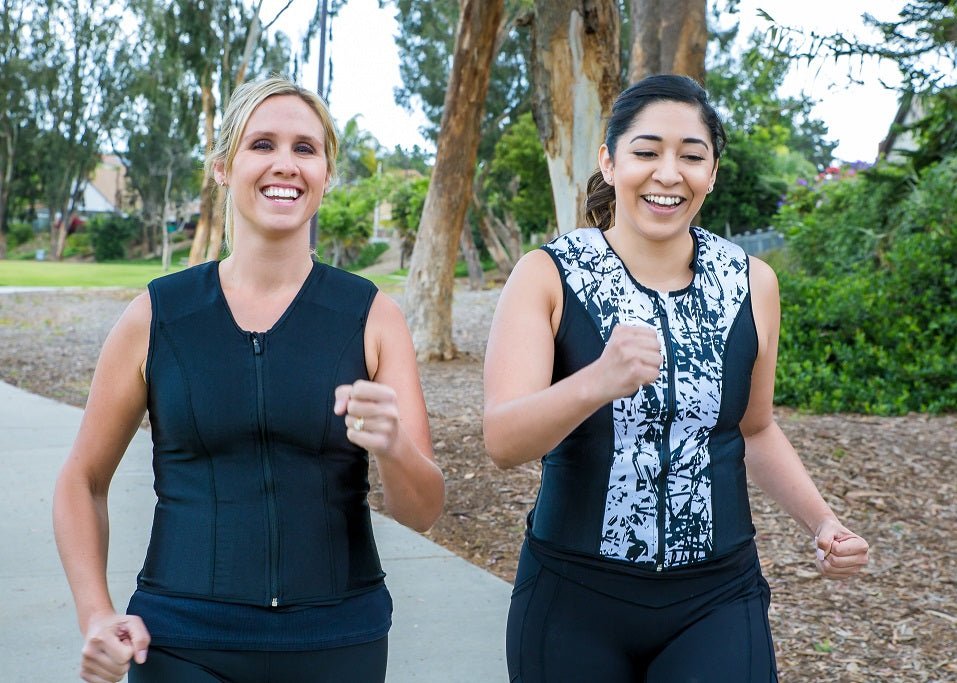Can Running with a Weighted Vest Improve Your Performance?
Runner’s World has long been a staple of information and guidance on running and walking. This article covers some of the basics of working out with weighted apparel.
Amy Schlinger
When the coronavirus outbreak forced gyms and fitness studios to close, it forced us all to get creative with our running and training routines. One popular running add on: a weighted vest.
But can adding heft actually improve your running performance? We asked running and fitness experts to break down the benefits, risks, and everything in-between.
The Benefits of Running with a Weighted Vest
Wearing a weighted vest while walking or running essentially increases the load on both your muscles and connective tissues. “That weight increase brings a challenge and a new stressor on the body, and change only occurs when the body is stressed,” says Mat Forzaglia, certified personal trainer and founder of Forzag Fitness in New York City. “By adding stress, you can improve your overall fitness.”
Sure, you can add stress by doing speed intervals or lifting weights, but “the idea is that by increasing weight while walking or running, the athlete is making weighted training as specific to their sport as possible,” explains Jason Fitzgerald, USATF certified coach and creator of Strength Running in Denver, CO.
When it comes to boosting endurance and increasing speed, it’s possible to move the needle when done safely and progressively. “Running with a weight vest has the potential to make you faster by reducing your injury risk so you can train long-term, and by increasing your aerobic fitness,” explains Fitzgerald.
Even if you’re not initially running at the same speed or intensity that you usually can (and you probably won’t be able to!), you can still reap the benefits. “Weighted walks or low-intensity running are more challenging than the same activity without a vest, so respiration will be higher at lower intensities, and that can help boost endurance while reducing an athlete’s risk of injury,” says Fitzgerald. “Plus, added strength gains will help mitigate injury risk—and staying healthy is one of the best performance enhancers possible.”
What About Weight Loss?
Just like with all other forms of exercise such as walking, running, cycling, and weight lifting, running with a vest is one method that burns calories. But your diet and lifestyle play important factors as long-term weight loss is more complicated than simply: Calories in need to be less than calories out.
“Adding weight and stress to your runs will help burn more calories, but how quickly you lose weight will vary depending on your body composition, nutrition, and other factors,” says Kenny Santucci, NASM, personal trainer and creator of STRONG New York in New York, NY.
“The extremes of exercise will always be more productive, such as high-intensity, long-duration, and very frequent exercise,” adds Fitzgerald. Follow these science-back tips if you’re interested in running for weight loss.
How to Properly Run With a Weight Vest
If you’ve never run before, or you don’t typically use weights to train, Santucci doesn’t recommend running with a weight vest as the joints won’t be prepared to handle the load.
“Running with extra weight does increase the stress of running, so it can be an injury risk,” explains Fitzgerald. “I’d advise that you begin by hiking [or walking] with a weighted vest, and once that feels good, reserve only very slow running for the vest.” In other words, strap on a weight vest for your shorter, easier running days, or try hiking or walking with a vest on cross-training days. You don’t want to slot this in on recovery days as the extra load will not allow your body to fully recover.
How to Choose the Correct Weight
“Err on the conservative side and wear enough weight that you just notice it at first,” says Fitzgerald. “You can always add more later.”
Forzaglia recommends vests that have individual single pound or two-pound weights that you can progressively add in or on to the vest as you get stronger and feel more comfortable with the vest.
Amy Schlinger is a health and fitness writer and editor based in New York City.This post originally appeared on Runner’s World and was published November 1, 2020.
At Challenge Weighted Workoutwear, our weighted vests and leggings can help you push a little harder and get more from yourr workouts. Visit us at www.Challengeweightedworkoutwear.com

